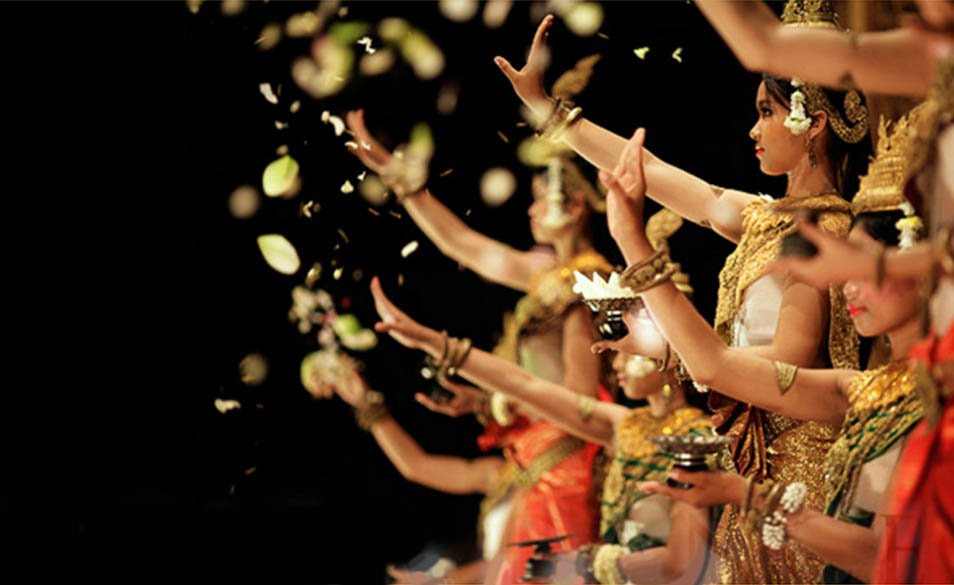Acts of ‘faith, strength and patience’ speak volumes
One may have read about them in school books or novels but never really thought of saluting their lives.
When one thinks of Indian mythology, he or she can’t help but think about all the beautiful, strong and divine women that have played an essential role in it. These women, undoubtedly, epitomise characteristics, qualities and virtues that are relatable even during this age and time. Even though these mythic goddesses have undergone hardships, endured a considerable amount of emotional and physical abuse, they have risen from the ashes like a raging phoenix.
Let us seek inspiration from 5 such women in Indian mythology that have taught timeless lessons to today’s women:
Known for her beauty and valour, this apsara was wrongfully seduced by Lord Indra. When her husband, Gautama, came to know about this, he turned her into a hard rock. But when her husband came to know about the truth, he pronounced that she could be brought back to life only when Lord Rama touches her feet. In other mythological books, it is mentioned that Ahilya was never completely accepted by Gautama even after her curse was broken. Yet, she continued to show devotion to her husband.
Lesson : Her situation is similar to what women in India currently face. Whether or not it is a female’s fault, she has to bear the burden of lowering her family’s name and status.
There’s no way a male member of the house can bestow ill-luck upon his family. It is always the other gender that is at fault. Looking at Ahilya’s perseverance, one can be assured of the bountiful strength that a woman possesses.
Tara, apsara and wife of the monkey king Bali
Tara was married to a tyrant who not only destroyed his brother Sugriva’s kingdom but also kidnapped his wife Ruma. Quite interestingly, Bali died a heroic readeath at the hands of Rama after which Tara fled to the jungle to live a pious and pure life. In retrospect, Bali never treated Tara with respect and abandoned her in a larger portion of their marriage.
Lesson : Things are not different today. Women are still mistreated and considered more like ‘objects’ and not human beings.
What lesson that contemporary women can learn from Tara is the ability to overcome a tyrannical marriage, a negative relationship and numerous hardships only to become a mother-like figure in her brother-in-law’s kingdom.
Rambha, the Queen of ‘apsaras’
A skilled dancer and musician, Rambha was one of the most beautiful apsaras ever mentioned in the entire Indian mythology. Due to her enchanting character, she was often asked by Lord Indra to seduce the sages to break their tapasya. But when she tries to disturb the penance of Sage Vishwamitra, she was cursed by him and transformed her into a rock for 10,000 years till a Brahmin breaks her free.
Lesson : Apsaras or celestial nymphs were supreme beings that lived in heaven. Although known for their appearance, apsaras were known to have a presence of mind as well. This is the reason why Lord Indra appointed Rambha.
Women in today’s society can learn to use tact and presence of mind to complete tasks that involve people or emotions.
Mandodari, the wife of Ravana
Being married to a man who is actively involved in illicit liaisons is not easy. In the present times, most women still don’t seem to say anything against such uncivilized acts of their husbands. Mandodari was such a lady who tolerated all the misdeeds of her husband without ever giving up on him. She tried her best to mend with Ravana till his death but she was unsuccessful. Truly, she was a woman of relentless faith, virtue and character who worshipped her husband devotedly.
Lesson : The present state of the society is a staunchly male-oriented one. A high level of patriarchy still prevails. Women are still expected to bow down to the needs of their husbands and love him despite his wrong-doings.
Even though they don’t need to honor his misdemeanor or marital affairs, women should learn to keep their character intact and have faith in just themselves and their actions.
Shabri, elderly ascetic woman
Most people refer Shabri as the old lady who fed Lord Rama berries. But there’s more to her story. Born to a hunter, she saw thousands of sheep goats and sheep being sacrificed for her marriage dinner. She felt such as a strong compassion for the animals that she fled the scene and became a devotee of Sage Matanga.
Lesson : Shabri’s endless ‘act of service’ is commendable. She is a woman with unlimited patience, compassion and love for all living beings. She stood up against the sacrifice of thousands of animals to appease the guests at her wedding.
She took a stand against something she truly believed in. This is something that today’s women should have definitely note of; given the kind of heinous crimes that one gets to hear.
So yes, it is safe to conclude that women form an integral part of mythology of India. And despite having sacrificed so much and almost every second of their lives, these women have certainly come across as mentally strong and strategic in their thought processes.
Adding to this thought, who said that their lives can’t set examples for women of this generation? Times may have changed but women still continue to endure hardships, in some form or the other.



Your opinion matters